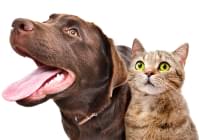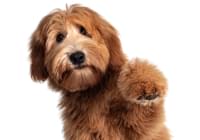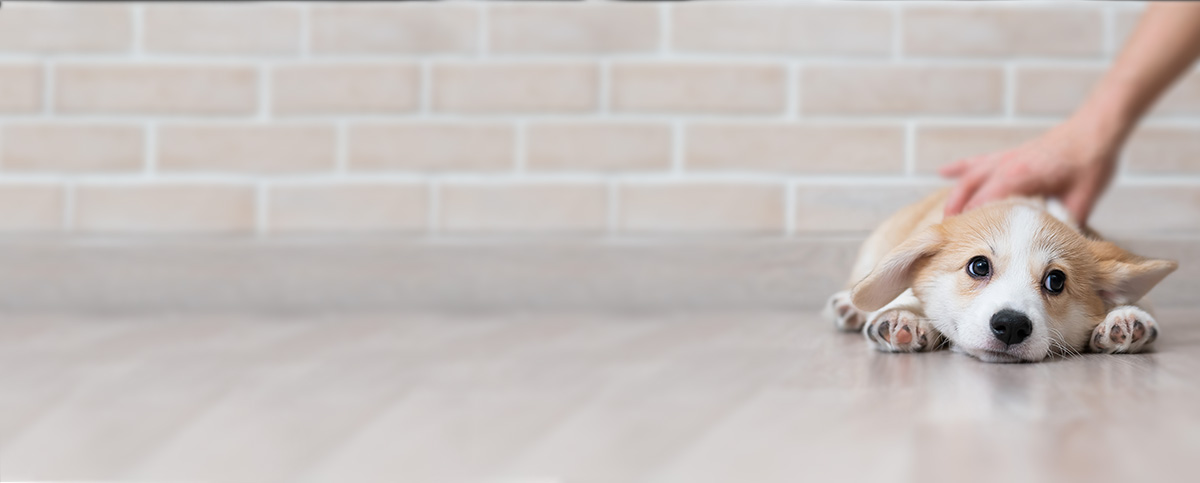Reverse Sneezing & Tracheal Collapse
Upper Airway Problems: Reverse Sneezing & Tracheal Collapse
Reverse Sneezing and Tracheal Collapse are two upper respiratory issues common in small breed dogs. They can occur in any dog, but are most common in breeds such as poodles, shih-tzus, chihuahuas, yorkies, and pomeranians.
Reverse Sneezing
Reverse sneezing is caused by anything that irritates the soft palate (the flap at the back of the mouth) and throat that results in a spasm. During the spasm, the dog will make unpleasant respiratory sounds that sound like it is dying. It can sound like a honking noise. The dog's neck will often extend and their chest will expand as the dog tries to inhale.
Causes include excitement, eating or drinking, pulling on a leash, perfumes, mites, or dust caught in the throat. Some dogs can have elongated soft palates which will get sucked into the throat causing reverse sneezing. Breeds susceptible to elongated soft palate include pugs, boxers, and bulldogs.
Reverse sneezing itself rarely requires treatment. If the sneezing stops, the spasm is over. Oftentimes, you can massage the dog's throat to stop the spasm; sometimes it's effective to cover the nostrils, which makes the dog swallow, which clears out whatever the irritation is and stops the sneezing.
If the episode doesn't end quickly, you can try depressing the dog's tongue, which opens up the mouth and aids in moving air through the nasal passages. If reverse sneezing becomes a chronic problem rather than an occasional occurrence, your veterinarian may need to look up the nasal passages (rhinoscopy), and may even need to take a biopsy to determine the cause of the problem. Sometimes, however, no cause can be identified.
Some dogs have these episodes their entire lives; some dogs develop the condition only as they age. In most dogs, however, the spasm is a temporary problem that goes away on its own, leaving the dog with no after-effects.
Cats are less likely to reverse sneeze than dogs are. However, owners should always have the veterinarian examine the cat in case it's feline asthma, and not a reverse sneeze. Feline asthma requires more treatment than reverse sneezing does.
Tracheal Collapse
The trachea is the scientific name for windpipe, the tube that connects the nose, mouth, and throat to the lungs and carries air to and from the lungs. The trachea is a fairly rigid tube with c-shaped cartilage rings.
Tracheal collapse occurs when the rings collapse on themselves. This often occurs because of weak cartilage. This is most common in smaller dogs because their trachea is smaller and weaker. Tracheal collapse often occurs during exercise or excitement. Panting or rapid breathing makes the collapse worse. It is often described as a goose-honking sound and often the animal extends its neck to try to open the trachea.
Normally, once the animal calms down, the trachea opens back up. However, if collapse is very frequent, it can cause inflammation in the trachea which then makes the trachea more likely to collapse.
Factors which can exacerbate tracheal collapse:
- Obesity
- Anesthesia involving the placement of an endotracheal tube
- Development of kennel cough or other respiratory infection
- Increased respiratory irritants in the air (cigarette smoke, dust, etc.)
- Heart enlargement (the heart can get so big that it presses on the trachea)
Treatment
Mild tracheal collapse usually requires no treatment. If secondary problems are a concern, they should be addressed. For more severe or worsening cases, anti-inflammatories, antihistamines, airway dilators and cough suppressants may be used. About 70% of dogs with tracheal collapse respond to medication, monitoring, or management of secondary factors. If the trachea cannot reopen, the animal may need emergency care.
If the episode lasts more than a minute or so, or their mucous membranes become bluish, go to your local emergency clinic immediately.
Surgery
If medical management does not produce satisfactory results, it is possible that surgery may be of benefit. Surgical treatment involves stabilizing the trachea with artificial rings. This surgery must be done by a specialist and is only effective in the very early disease stages with young dogs.
Resources:
Cookies on this website are used to both support the function and performance of the site, and also for marketing purposes, including personalizing content and tailoring advertising to your interests. To manage marketing cookies on this website, please select the button that indicates your preferences. More information can be found in our privacy policy here.
We've upgraded our online store!
Ordering your pet's favorite food and medicine is now easier than ever.
Order Food & Meds
Quick & Easy Registration

Please use the phone number and email you currently use for hospital communications to link your account!
Linked Pet Records & Rx

Your pet's prescriptions and records will be waiting for you!
Pawsome
Savings!

AutoShip discounts, promotions on your favorite products and more!


